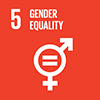Description/achievement of initiative
The Global Slavery Index uses quantitative methods to provide a measure of the prevalence of slavery in 167 countries, and places these figures in the context of what governments are doing to tackle it. The annual Index, informed by the most extensive survey research ever conducted on slavery, is critical in directing efforts to eradicate slavery and understanding the contextual factors that make people vulnerable to modern slavery.The Global Slavery Index is tool for citizens, non-government organisations (NGOs), businesses, and public officials to understand the size of the problem, existing responses, and contributing factors, so they can build sound policies that will end modern slavery. The Walk Free Foundation partners with key stakeholders in countries with the highest prevalence to unequivocally strengthen data, inform regional responses and generate best practice examples to be exported globally.
Implementation methodologies
Measuring modern slavery is a very difficult undertaking due to the hidden nature of this crime. A dedicated team of researchers and statisticians based in Perth, Australia, Washington D.C, USA, and Hull, UK, are continually investigating improved ways to measure this crime. The team also work in consultation with an international panel of experts from international organisations, think tanks and academic institutions. Surveys represent the most accurate method for estimating the numbers of people living in modern slavery. The Walk Free Foundation commissioned Gallup to conduct nationally representative, random-sample surveys in 26 countries. The data obtained from these surveys represents 44% of the world’s population, with more surveys planned to cover greater percentages of the population in coming years.The results from these surveys are considered alongside data from other pre-existing surveys and a review of secondary sources. An extrapolation method has been developed for the remaining countries that took into account factors including vulnerability, geography, and country context to produce an appropriate estimate. The preliminary prevalence estimates are then reviewed against secondary source estimates and qualitative information collated for 58 countries. Final country level adjustments are made to specific countries where the evidence suggested it was justified, in particular for Small Island Developing States. The Index also measures how governments are responding to modern slavery. Data is collected against five objectives for each country: 1. Survivors are identified, and supported to exit and remain out of modern slavery. 2. Criminal justice mechanisms address modern slavery. 3. Coordination and accountability mechanisms for the central government are in place. 4. Attitudes, social systems and institutions that enable modern slavery are addressed. 5. Businesses and governments through their public procurement stop sourcing goods and services that use modern slavery. The government response section measures change and monitors best practice in effort to eradicate forced labour, end modern slavery and eliminate the worst forms of child labour. As a politically independent assessment, it provides unparalleled insight into government action and inaction. The Global Slavery Index examines the contextual factors that impact on the vulnerability of people in a country to modern slavery. Information is collected from reputable sources on 37 variables across five dimensions that affect vulnerability to enslavement. Through statistical testing the Index examines the relationship between these factors and the prevalence of modern slavery.
Arrangements for Capacity-Building and Technology Transfer
The Walk Free Foundation already knowledge shares with different experts and governments wanting to improve their prevalence estimation methodology. All our methodology, including research instruments, are available free of charge online.
Coordination mechanisms/governance structure
The Global Slavery Index is the flagship report produced by the Walk Free Foundation, a global human rights organisation dedicated to ending modern slavery. The Walk Free Foundation was founded by Australian philanthropists, Andrew and Nicola Forrest. The methodology for the Index was developed by an internal research team and through external consultations with an international and independent Expert Advisory Group. For more information, see http://www.walkfreefoundation.org/
Partner(s)
* Walk Free Foundation
* WISE – Wilberforce Institute for the Study of Slavery and Emancipation
* Gallup



 December 2016
December 2016
 Time-frame: October 2013 - Ongoing
Time-frame: October 2013 - Ongoing